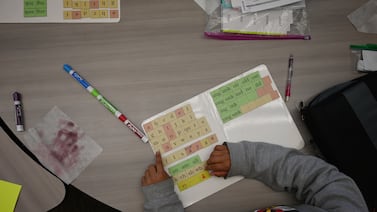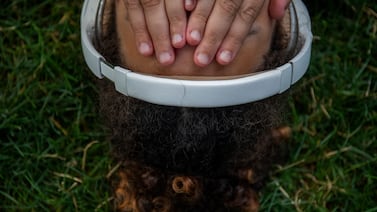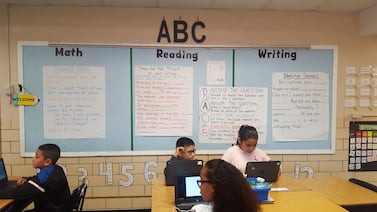Sign up for Chalkbeat Indiana’s free daily newsletter to keep up with Indianapolis Public Schools, Marion County’s township districts, and statewide education news.
Indianapolis Public Schools students will have a less-rigid dress code next school year under a new policy designed to reduce disciplinary actions that keep students out of classrooms.
The universal dress code, adopted by the school board last week, states that students in all grade levels must wear closed-toed shoes, pants, shorts, skirts, or dresses that are free of tears and are at least fingertip-length, and a top with sleeves that covers the midriff. Like the current dress code, it includes some restrictions on inappropriate clothing.
The new three-page policy is far less restrictive than the 10-page code last revised in 2018 that dictated acceptable clothing colors and styles in separate rules for elementary and secondary students.
The new code eliminates the old policy’s requirement that elementary students wear collared or turtleneck shirts in solid colors that are tucked into khaki, black, or navy blue pants, skirts, or shorts at all times. In addition, next year’s code will no longer require secondary students to wear solid-colored collared or turtleneck shirts tucked into solid-color pants, shorts, or skirts that aren’t jeans.
The move to change the dress code follows a post-pandemic shift away from dress code enforcement. It also aligns with the board’s recent efforts to adopt policies that promote equity across all student subgroups. The policy states that dress code enforcement should not create disparities or reinforce marginalization of any group, and emphasizes that students should not face unnecessary barriers to classroom attendance due to the code.
“It looks like us prioritizing learning as opposed to what a student is wearing,” Chief Learning Officer Lela Simmons told the school board in February. “Unless there is something that is extremely distracting or potentially unsafe, then we’re not going to prevent a student from learning because of what they’re wearing.”
Since returning to in-person learning, some schools were still enforcing the district’s old dress code while others were more lenient, Simmons told the school board in February. But some schools have also gotten into unnecessary disputes with students over clothing violations that detract from learning, she said.
“I think overall most leaders would prefer not to lean into that because we do want kids to be learning,” Simmons said.
What are the new IPS dress code’s restrictions?
The new dress code still has some restrictions. Students may not wear clothing, jewelry, or personal items that:
- are pornographic, contain threats, or promote illegal or violent conduct.
- demonstrate an association with a hate group or use hate speech.
- intentionally show private parts.
- cover the student’s face to the extent that the student cannot be identified (except clothing or headgear worn for a religious or medical purpose).
- demonstrate gang association.
The policy allows head coverings worn in observance of a student’s religion. However, bonnets, durags, hats inside the building, and wave caps are not permitted.
Hoodies are allowed provided that staff are able to see the student’s face, Simmons said in February.
Students will not face out-of-school suspension for dress code violations, the new policy states.
- For a first offense, a parent or guardian is contacted and the student is directed to cover, change, or remove non-complying clothes.
- For a second offense, a parent or guardian is called and the student is once again told to cover, change, or remove non-complying clothes.
- For a third offense, a parent or guardian and the student are required to attend a “restorative conference.”
The policy states that students should not be removed from class for a dress code violation unless the clothing creates a “substantial disruption to the educational environment,” poses a hazard, or is part of a student behavior rule violation such as harassment, intimidation, or bullying.
The district is also working on a dress code for staff, according to a spokesperson.
Amelia Pak-Harvey covers Indianapolis and Lawrence Township schools for Chalkbeat Indiana. Contact Amelia at apak-harvey@chalkbeat.org.







